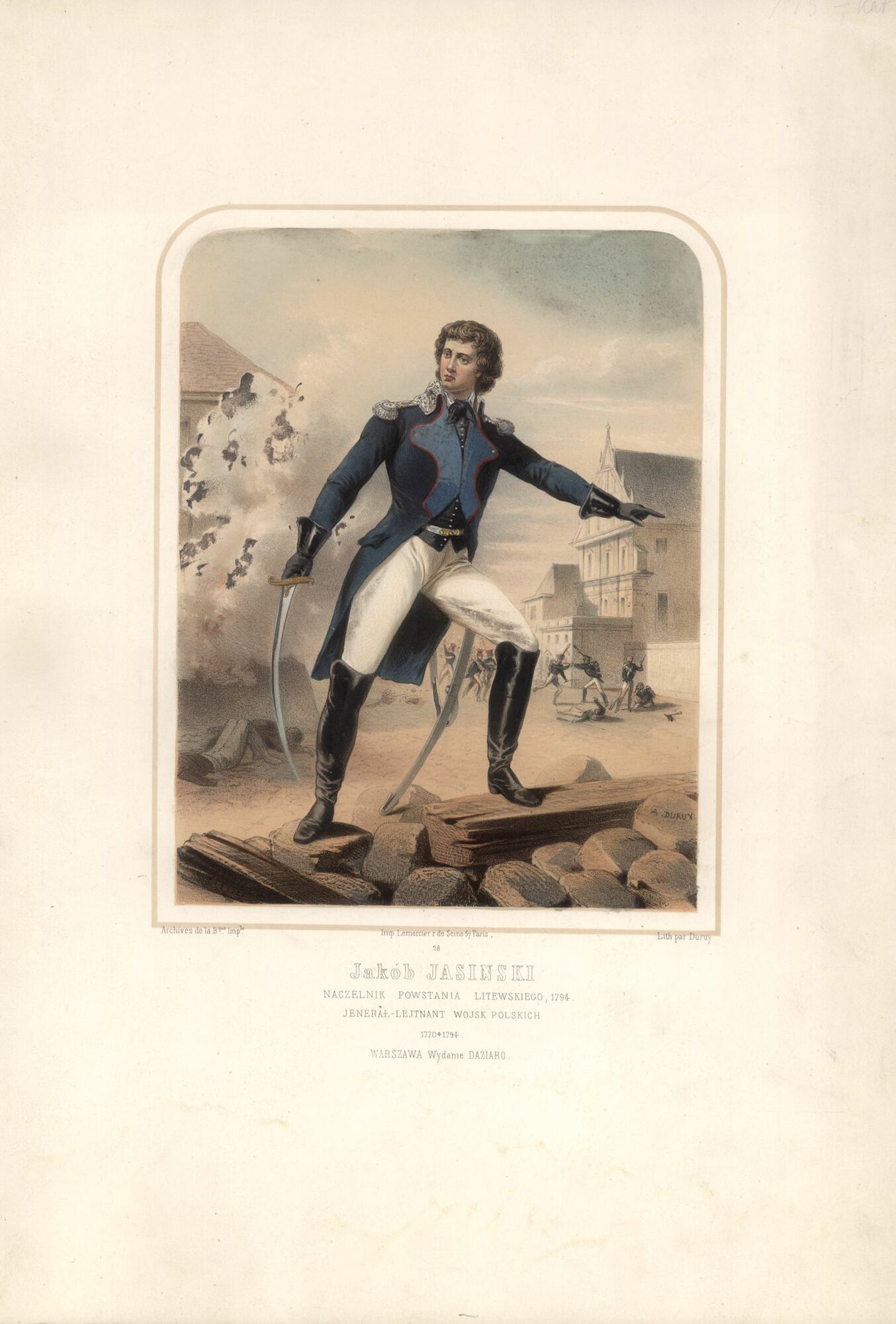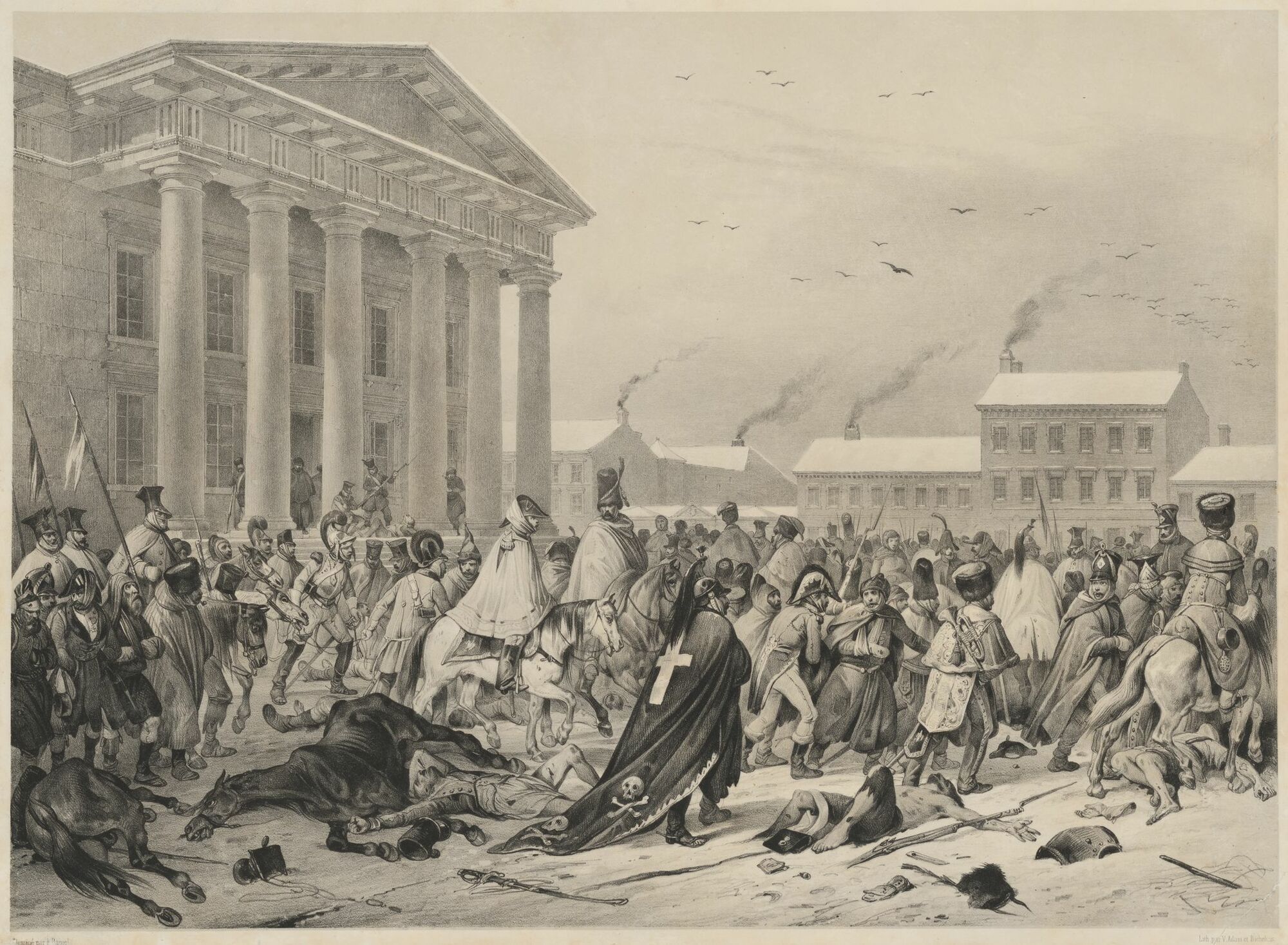
Town Hall Square. 2019
Photographer Tomas Kapočius
Lithuanian Art Museum
The Town Hall Square, also known as the Market Square, had been Vilnius’ main marketplace until the 19th century, as well as the city commercial centre. Shops had been set up in the Town Hall itself and the neighbouring buildings served as warehouses for the merchants. The shops on the square were being built out of wood and subsequently brick. The Imbarai Emporium was established nearby (currently 29 Didžioji st.) The square was used for events and visits of rulers. Workers for hire would assemble on the square in search for work. It was also the place for executions, had a shame pole and gallows. The Town Hall Square is associated with numerous historic events. It was here that the Lithuanian uprising was declared on April 24, 1794.
When the commercial activities were transferred to other marketplaces in the end of the 18th century, the square was increasingly used for representational purposes. A part of it was turned into a small fenced square with trees and a fountain was built in the second half of the 19th century. The trees were cut down in the early 20th century. A monument for Vincas Mickevičius-Kapsukas was erected on the square in 1962 and taken down in 1990, despite being guarded by OMON troops. Currently, the Town Hall Square is a venue for city events, concerts and fairs.

A. Duruy after Franciszek Smuglewicz (1745–1807)
Jakub Jasiński. 19th century
Paper, colour lithograph
Lithuanian Art Museum
JAKUB JASIŃSKI (1761–1794)
Engineer, poet, commander of the 1794 Uprising in Lithuania. In 1773–1783 studied at the Corps of Cadets of Warsaw School of Chivalry. In 1789 became the commanding officer of the Engineering Corps for Lithuania, where he taught fortification. Successfully participated in the 1792 war between Polish–Lithuanian Commonwealth and the Russian Empire and became the army Colonel of the Grand Duchy of Lithuania. In 1793 started secretly organising an uprising. On April 22–23, led the liberation of Vilnius from the Russian Imperial forces. On April 24 became the commandant of Vilnius, declared the act of the Lithuanian uprising on the Town Hall Square. On May 3, appointed the commander-in-chief of the Lithuanian forces by the National Supreme Council of Lithuania. On May 11, promoted to general-lieutenant for the defence of Vilnius. Due to accusations of radical republicanism and ambitions to increase the Lithuanian sovereignty by members of the Council, he was relieved of duty by Tadeusz Kościuszko, leader of the uprising, in June 1794. Jasiński left for Warsaw, where he died in the Battle of Praga.

Józef Oziębłowski (1805–1878)
Town Hall Square in Vilnius. Circa 1835
Paper, lithograph
Lithuanian Art Museum

Józef Ozębłowski, 1805–1878)
Didžioji Street in Vilnius. 1834
Paper, lithograph
Lithuanian Art Museum

Viktor Vincent Adam (1801–1866), Luis Philippe Alphonse Bichebois (1801–1850) and others
The retreating French army on the Vilnius Town Hall Square in 1812. 1846
Paper, lithograph
Lithuanian Art Museum